Power thresher maintenance
Why is proper maintenance of a power thresher important?
Improper maintenance, wrong machine settings, or faulty operation of a power thresher can increase losses and fuel consumption, and potentially endanger the operator’s health.
Thresher maintenance
Check the thresher for wear and tear
| Check pulley surfaces. Rough grooves, if nicked, must be smoothened with a fine file. Cracked pulleys should be replaced immediately. | 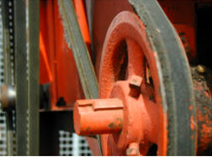 |
To prevent premature belt failure, check each belt’s alignment and tension. Adjust the idler pulley on the blower/cylinder belt to correct tension. | 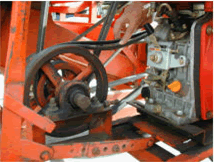 |
|
| Check all pegs on the threshing cylinder for tightness. Loose pegs will damage the machine and may be dangerous to the operators. | 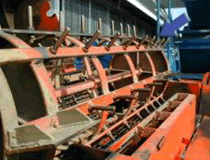 |
Examine the peg-teeth for wear. Worn pegs must be rotated 180 degrees or interchanged with those less worn. Badly worn pegs must be replaced or rebuilt by welding. | 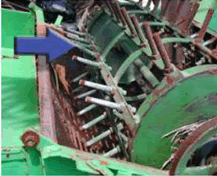 |
Make sure there are no loose or missing bolts and set screws. Tighten or replace as necessary.
Storage
- Clean the machine thoroughly.
- Remove belts and store these in a dry place.
- Paint parts that need repainting.
- Clean and apply oil to exposed metal surfaces in order to prevent rust.
- Store the machine in a clean, dry location and then cover it to reduce damage from dust accumulation.
- Follow the manufacturer’s recommendations on engine storage.
Lubricate
- Lubricate all bearings with good-quality, general purpose grease every 25 hours of operation.
- Periodically apply a small amount of oil to all hinge points.
- Check engine oil every day. Follow the engine manufacturer’s recommendations for oil change intervals and oil grade. Be sure the recommended oil level is maintained.
- Service the air cleaner, fuel filter, fuel line, carburetor, and spark plug regularly according to the engine manufacturer’s instructions.
Important machine settings
For peg-tooth drums the drum tip speed should be about 12−16 m/s. Choose higher speed for better threshing action, lower speed for less grain damage. The drum speed in revolutions per minute depends on the drum diameter (see table below).
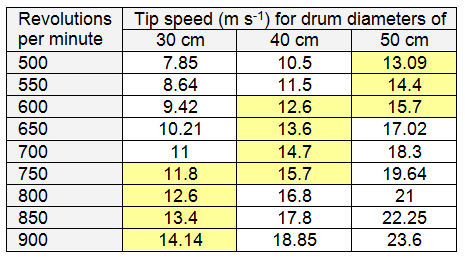 |
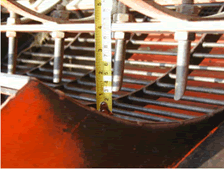
Clearances between peg-teeth and concave should be about 25 mm. A smaller clearance increases grain damage and might lead to clogging. Larger clearances reduce threshing efficiency. |
For more information:
Visit the Rice Knowledge Bank website (http://www.knowledgebank.irri.org), email postharvest@irri.org; or call +63 2 580 5600.







